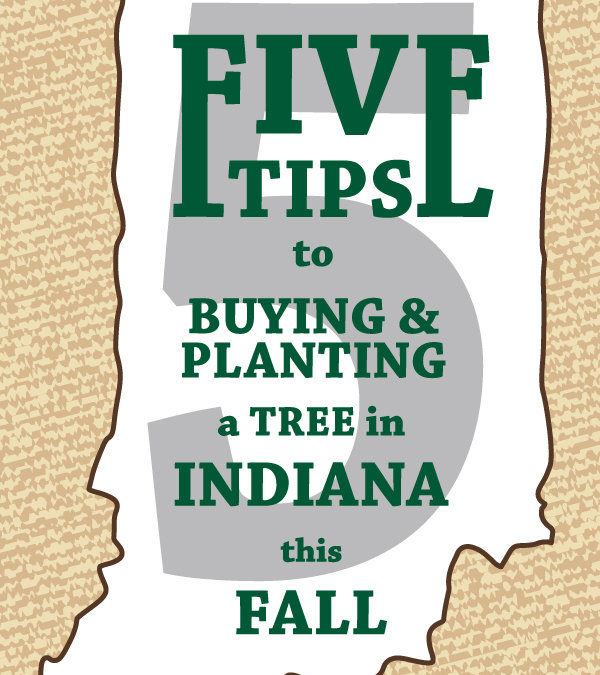Contrary to what you might think, the benefits of planting a tree in the Fall outweigh those of planting in the Spring. While you’re not going to see any growth during winter months, planting a tree in the Fall allows the root system to establish before going dormant in the winter. Trees also use energy trying to survive the dry Summer months and blooming in the Spring which leaves the Fall time as the most relaxed season for trees to establish new residency.
HERE ARE 5 TIPS FOR BUYING AND PLANTING A TREE IN INDIANA THIS FALL:
- Pick the right tree. Red Maples and Tulip trees do great in Indiana. If you’re looking for an evergreen tree, you can’t go wrong with a spruce; however, be sure to pick the right spruce for the amount of available space. Colorado Blue and Norway Spruce are fine selections as long as there is thirty feet available for them to grow to mature size. Black Hills and Fat Albert are able to grow in tighter areas with mature widths of twelve to twenty feet. You might consider a Hemlock if the area is more shaded.
- Pick the right size. Make sure to look up when you decide on a location to make sure the tree won’t eventually grow into anything (power line, over hanging deck…etc). Think about how tall you want the tree within the first few years and be sure to have realistic expectations about your tree’s growth during this time. You may have heard the saying “the first year they sleep, the second year they creep, and the third year they leap,” this is important to remember while selecting the right tree for your home. If you want to enjoy a certain height within the first couple of years, it would be wise to invest in a more mature tree now, instead of hoping it will grow quickly.
- Planting. The most common mistake made when planting a tree is planting it too deep in the soil. An easy way to determine proper depth for tree installation is to take the butt end of a shovel and hold it next to the root ball guiding your hand until it reaches the top of the root ball. Then, place another shovel across the hole and place the shovel marked by your hand into the hole. Your hand should be real close to the shovel that is laid across the hole. A little shallow is much more acceptable than too deep. Before you plant, be sure to do some research on the type of tree and its size to help ensure you plant at the proper depth. Before filling the hole back in, stand back and check to see that the tree is straight.
- Watering—don’t overdo it. One of the benefits of planting in the Fall is that you take advantage of what the cooler, wetter months provide naturally – so be careful not to over-water your tree. When the first frost hits, you can put the garden hose away until the ground thaws in the spring.
- Low maintenance vs. pro maintenance. While the maintenance of the tree is fairly low once it is in the ground, there are some things to consider before the average DIY warrior decides to tackle planting a tree. How much time do you want to invest in the project? What are you going to do with the excess dirt after digging the hole? How do you properly stake the tree? What is the proper way to prune? How much are you willing to risk on your investment by doing it yourself? Like many things around your home, there are some things best left to the professionals. At Brownsburg Landscape, we have professionally trained staff who take pride in planting trees and enjoy helping you beautify your home.
Dan Bonner is the Sales and Customer Service Representative with Brownsburg Landscape. Dan has been helping Brownsburg Landscape customers beautify their homes for over 19 years. Give Dan a call today at 317-852-8440 to talk about your next landscaping project.

